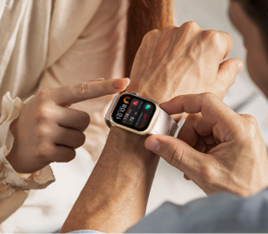Monitoring your blood pressure at home is an essential step
in maintaining good health, especially for those with high blood pressure or a
family history of hypertension. Regularly checking your blood pressure helps
you stay informed about your heart health and can prevent complications like
heart disease or stroke. With the right tools and techniques, you can easily
keep track of your blood pressure from the comfort of your home.

Tips for Monitoring Blood Pressure at Home
Checking your blood pressure at home gives you real-time
data about your heart health. Consider the following points when you need to
make regular monitoring of your blood pressure to identify trends in your blood
pressure and make adjustments to your lifestyle.
Step 1: Choose the Right Blood Pressure Monitor
Choosing a reliable blood pressure monitor is key to
accurate readings. There are two main types: manual and automatic. For home
use, automatic monitors are the easiest and most accurate. When selecting a
monitor, ensure it’s validated for accuracy by health organizations.
Step 2: Measure at the Right Time
For accurate results, take your blood pressure at the same
time each day. Early morning, before eating or drinking, is ideal. Avoid taking
measurements after exercise, smoking, or drinking caffeine, as these can
temporarily raise your blood pressure. Consistency is key in tracking your
health over time.
Step 3: Proper Positioning
Accurate measurements depend on proper positioning. Sit in
a comfortable chair with your back supported, feet flat on the ground, and arm
at heart level. If using an arm cuff monitor, place it one inch above your
elbow. For wrist monitors, make sure the wrist is at heart level. Following
these guidelines ensures that your readings are precise.
Step 4: Take Multiple Measurements
Blood pressure can vary slightly from reading to reading.
For accuracy, take two or three measurements, about a minute apart, and note
any significant differences. Consistently high readings may signal the need for
a doctor’s visit. Tracking your readings helps you and your healthcare provider
better understand your heart health.
Step 5: Know What Normal Blood Pressure Is
Normal blood pressure is usually around 120/80 mmHg.
Readings above 130/80 mmHg may indicate high blood pressure (hypertension),
which can lead to serious health risks if left untreated. If your readings are
consistently high, it’s important to consult a healthcare provider to create a
plan for managing your blood pressure.
Step 6: Use Technology for Continuous Monitoring
Devices like the Huawei Watch D2 are great tools for monitoring your blood
pressure throughout the day. In addition to blood pressure, the watch tracks
your heart rate and other key health metrics. By syncing with your smartphone,
you can easily track and manage your readings, helping you stay on top of your
health.

Step 7: When to Seek Medical Advice
If your blood pressure remains consistently above 130/80
mmHg, it’s time to consult your doctor. High blood pressure often doesn’t show
symptoms, so it’s crucial to monitor it regularly. Risk factors like obesity,
smoking, or a family history of hypertension increase the need for consistent
monitoring. Your doctor can guide you on lifestyle changes or medications to
keep your blood pressure in check.
Conclusion
Monitoring your blood pressure at home is a simple but
effective way to manage your heart health. By choosing the right monitor,
measuring regularly, and understanding what normal blood pressure is, you can
track your health and take action when necessary. Furthermore, the best blood pressure monitor Huawei
Watch D2 offers an easy way to monitor key health metrics in
real time. By regularly checking your blood pressure, you can make informed
decisions and maintain a healthy heart for years to come.
